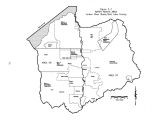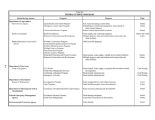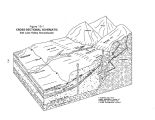| OCR Text |
Show Table 5- 6 PRESENTLY DEVELOPED PUBLIC GROUNDWATER SUPPLIES Jordan River Basin Public water supplier Capacity ( acre- feet/ year) Granger Hunter Herriman Holladay 1 Kearns Magna Midvale Murray Riverton Salt Lake City Sandy City South Salt Lake Taylorsville West Jordan White City Salt Lake County WCD 7,340 1,300 3,520 i 360 4,090 740 11,590 2,060 24,490 14,850 3,120 12,700 5,650 2,630 19,960 TOTAL 114,400 public water system, and have their own wells. Similarly, self- supplied industrial users are industries not served by a public water system, but have their own private water source. Non- potable water is divided into secondary, agricultural and developed wetlands water use categories. Secondary is non- potable water. used for irrigation of residential lawns and gardens from either pressurized or ditch delivery systems. Agricultural is water used for irrigation of farm lands. Developed wetlands is water used to manage the private duck clubs and public water fowl management areas in the north west portion of the basin. The 1995 total potable water use is 308,300 acre- feet while the 1995 total non- potable use is 244,200 acre- feet. The estimated total water use for the Jordan River Basin presently is 552,500 acre- feet per year. Compared with the present water supply, this leaves an unused supply of 92,450 acre- feet per year. 5.4.1 Municipal and Industrial Use Municipal and industrial uses include all potable water along with non- potable water used in secondary irrigation systems. Total M& I water use for 1995 is 331,500 acre- feet, including 308,300 acre- feet of potable use and 23,200 acre- feet of non- potable secondary use. See Table 5- 7. The majority of M& I water use is the treated water supplied by public water systems. This water is used for residential, commercial, institutional and industrial purposes. Residential use of water includes drinking, food preparation, bathing, washing clothes and dishes, flushing toilets, watering lawns and gardens, and other household uses. The Wasatch Front Water Demand/ Supply Model ( WFCM) estimated the 1995 residential water use at 164,600 acre- feet. Commercial use includes water used in business facilities such as hotels, motels, restaurants, office buildings, retail stores and service stations. Institutional uses include water used in government and military facilities, prisons, educational facilities, golf course and park watering, fire- fighting, and unmetered losses within water delivery systems. The WFCM estimated the 1995 commercial/ institutional water use to be 77,200 acre- feet. Industrial use includes water to manufacture products such as steel, petroleum, chemicals, paper or dairy products. Mining and other related activities are included in the industrial use category. The WFCM estimated the Lake Mary 5- 10 |

















































































































































































